Explore Port Said - Egypt Travel, Africa
Port Said, Egypt's vibrant port city, stands as a gateway to the Suez Canal, one of the world's most critical maritime routes. Founded in 1859 to serve the canal, Port Said quickly became a bustling hub of trade and cultural exchange. Its strategic location at the northern entrance of the Suez Canal has shaped its rich history and diverse cultural heritage. Today, Port Said invites travelers to explore its unique blend of historical landmarks, modern attractions, and lively local culture.
Population: Approximately 680,000 in 2023.
Economy: Port Said's economy is based mostly on trade, thanks to its strategic location by the Suez Canal. Key sectors include shipping, logistics, manufacturing, and tourism, fueling the city's vibrant economic landscape.
Landmarks: Famous for the Port Said Lighthouse, Port Said Museum, and the Fort El-Muwaylah.
Egypt
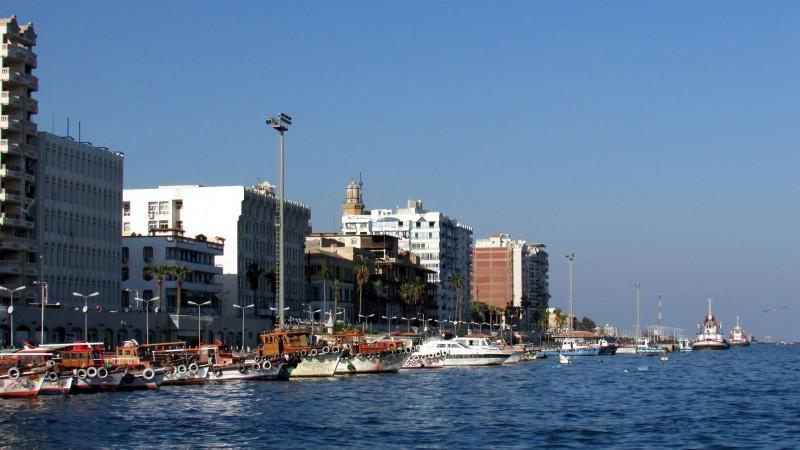
Overview of Port Said
History & Culture Influence
Port Said was founded in the mid-19th century during the building of the Suez Canal, which marked a watershed point in world trade. Its history is marked by a series of significant events and figures, including the prominent role it played during World War I and II. Beyond historical heritage, Port Said's cultural landscape reflects a rich tapestry of influences. The city’s architecture showcases a mix of colonial and contemporary styles, a testament to its diverse past. Landmarks such as the Port Said Lighthouse and historic buildings along the waterfront offer glimpses into the city’s storied past. The fusion of Egyptian traditions with international influences creates a unique cultural atmosphere that is both welcoming and intriguing.
Interaction with The Locals
Port Said is home to a varied and vibrant population of over 680,000 people. As a major port city in Egypt, its citizens come from various backgrounds, contributing to a rich cultural tapestry. The local community is known for its hospitality and vibrant street life, reflecting the city's blend of historical significance and modern energy.
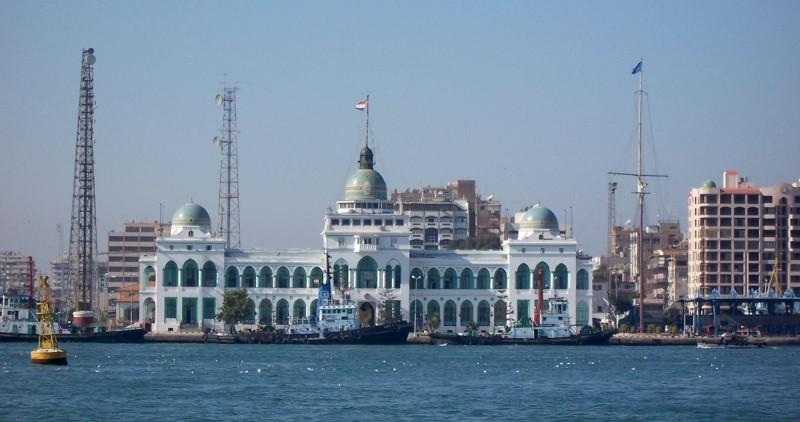
A normal day at Port Said Port - © Britannica
Top Attractions in Port Said
Port Said Lighthouse
The Port Said Lighthouse stands as a beacon of maritime history and a prominent symbol of the city. Established in the 19th century, this iconic structure guides ships navigating the busy waters of the Suez Canal. Its historic significance and picturesque views make it a must-visit landmark for travelers interested in Port Said’s maritime heritage.
Port Said Museum
A visit to the Port Said Museum is vital for gaining a better grasp of the city's past. The museum showcases an array of artifacts, exhibits, and historical memorabilia related to the city’s maritime and cultural history. Exploring its collections provides valuable insights into the city’s past and enhances the overall travel experience.
Fort El-Muwaylah
Fort El-Muwaylah is another historical gem in Port Said, offering a glimpse into the city’s military past. This fortification, strategically positioned to guard the Suez Canal, reflects the city’s historical significance in regional defense. Visiting the fort allows travelers to appreciate its historical role and enjoy panoramic views of the surrounding area.
Old Port Said District
Wander through the Old Port Said District to experience the city’s traditional charm. This neighborhood is distinguished for its antique architecture, thriving markets, and lively street life. Exploring the district provides a sense of the city’s cultural heritage and allows visitors to engage with its lively atmosphere.
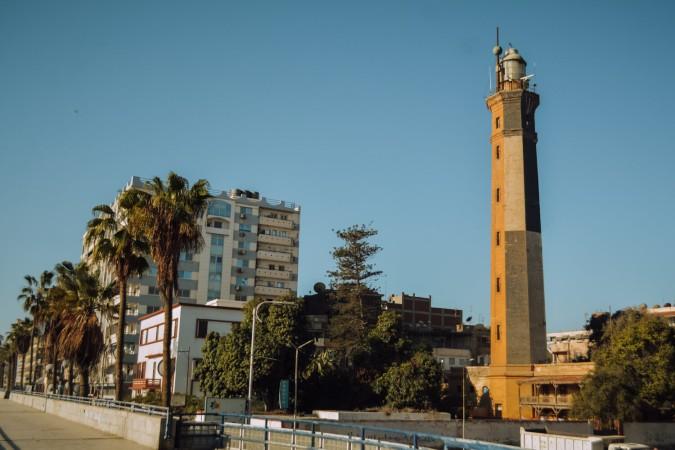
Port Said Lighthouse - © Egypt Tourism
Must-Try Dishes in Port Said
- Koshari: No visit to Port Said is complete without sampling koshari, Egypt's beloved street food. This hearty dish combines lentils, rice, and pasta, topped with a spiced tomato sauce and crispy onions. It’s a filling and flavorful meal that reflects the city's culinary traditions.
- Ful Medames: Another staple of Egyptian cuisine is ful medames, a savory stew made from fava beans and typically enjoyed with pita bread. This dish is both nutritious and satisfying, often served for breakfast or as a hearty snack.
- Maqluba: For a traditional and flavorful meal, try maqluba, a layered rice dish cooked with meat (usually chicken or lamb) and vegetables. The dish is seasoned with a blend of spices and then flipped upside down before serving, revealing a beautifully arranged presentation.
- Molokhia: Molokhia is a unique and traditional Egyptian dish made from jute leaves, cooked into a rich, green stew. Often paired with chicken or rabbit, this dish offers a distinctive taste of Egyptian cuisine and is a favorite among locals.
- Stuffed Grape Leaves: Stuffed grape leaves, known locally as warak enab, are another popular dish in Port Said. These tender grape leaves are filled with a mixture of rice, herbs, and sometimes meat, then rolled and cooked in a tangy tomato sauce.
- Basbousa: For dessert, indulge in basbousa, a sweet and moist semolina cake soaked in sugar syrup. This traditional Egyptian treat is often garnished with coconut or almonds and is a popular choice for ending a meal on a sweet note.

Stuffed Grape Leaves - © The Olive and The Sea
Festivals & Local Celebrations
Port Said International Festival
The Port Said International Festival is a major annual event celebrating the city’s rich cultural heritage. Held every year, this festival features a vibrant mix of music, dance, and traditional performances. It brings together artists and performers from around the world, showcasing a diverse array of cultural expressions and creating a lively atmosphere throughout the city.
Suez Canal Anniversary
The Suez Canal Anniversary is a significant celebration marking the opening of the Suez Canal, a crucial maritime route. This event is commemorated with grand parades, exhibitions, and special ceremonies. The anniversary festivities highlight the canal’s historical importance and offer visitors a chance to learn more about its impact on global trade.
Eid al-Fitr
Eid al-Fitr is one of the most widely celebrated celebrations in Port Said. This festive event commemorates the conclusion of Ramadan, the Islamic holy month of fasting. The festival is characterized by communal prayers, festive meals, and vibrant street celebrations. It’s a time for family gatherings, giving charity, and enjoying traditional sweets and dishes.
Eid al-Adha
Eid al-Adha, also known as the Festival of Sacrifice, is another important celebration in Port Said. It commemorates the willingness of Ibrahim (Abraham) to sacrifice his son in obedience to God. The festival includes special prayers, the ritual sacrifice of animals, and communal feasts. It’s a time for reflection, charity, and festive gatherings.
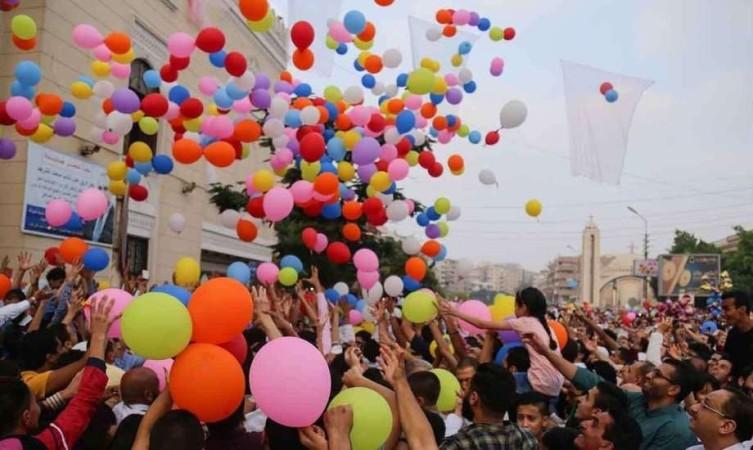
Egyptians celebrate Eid al-Fitr - © Sada Elbalad english
What to Do in Port Said
- Boat Tour at Suez Canal: A boat excursion allows you to see the magnificence of the Suez Canal. These tours provide a unique view of one of the world’s most important waterways, offering insights into its history and significance while you enjoy scenic vistas and informative commentary.
- Relax at Port Said Beach: Enjoy a day at Port Said Beach, where you can swim in the Mediterranean Sea, sunbathe on the sandy shores, or simply relax and take in the beautiful coastal views. The beach is well-maintained and provides a great escape from the city’s hustle.
- Explore Jardins de Port Said: Visit Jardins de Port Said, a serene park perfect for leisurely strolls and relaxation. The park’s green spaces and scenic views offer a peaceful retreat and a chance to unwind amidst nature.
- Explore Old Port Said District: Discover the charm of the Old Port Said District. This area is known for its historic architecture, vibrant street life, and bustling markets. It’s an excellent place to experience the city’s traditional ambiance and shop for unique souvenirs.
- Visit the Port Said Museum: Explore the Port Said Museum to delve into the city’s rich maritime and cultural history. The museum’s exhibits feature artifacts and stories that highlight Port Said’s significant role in global trade and local heritage.
Shopping in Port Said
- Port Said Souk: Dive into the vibrant atmosphere of Port Said Souk, the city’s bustling market where you can find a wide range of goods. From traditional textiles and handicrafts to spices and fresh produce, this souk is a perfect place to experience local commerce and pick up unique souvenirs.
- Al-Farouq Market: Explore Al-Farouq Market for a diverse shopping experience. This bustling market sells everything from apparel and accessories to household items and gadgets. Its bustling atmosphere and diversity make it an ideal location for both shopping and people-watching.
- El-Tahrir Street: Stroll along El-Tahrir Street, known for its array of shops and boutiques. This street offers a mix of traditional and contemporary stores, where you can find everything from local crafts to stylish apparel. It’s a great place to explore the city’s shopping scene and discover unique finds.
- Al-Ahram Street: Visit Al-Ahram Street for a variety of shopping options, including specialty stores and local shops. The street is lined with vendors selling everything from traditional Egyptian goods to modern accessories, offering a diverse shopping experience.
- Souq Al-Jomaa: Visit Souq Al-Jomaa on Fridays for a unique traditional Egyptian market experience. This market features a variety of goods, including clothing, accessories, and local produce. It’s a bustling and vibrant spot to shop and soak up the local atmosphere.

Boat Tour at Suez Canal - © Nasser Youth Movement
Weather in Port Said: Best Time to Visit
Spring in Port Said
Spring in Port Said is distinguished by warm and pleasant temperatures ranging from 20°C to 30°C (68°F to 86°F). This season is perfect for exploring outdoor attractions and enjoying the city's cultural events. With comfortable weather and blooming scenery, spring is a popular time for tourists who wish to experience the city's gardens, parks, and historical sites without the heat of summer.
Summer in Port Said
Summer in Port Said brings hot temperatures often exceeding 30°C (86°F). The high heat and sunny skies make it the ideal season for beachgoers and those looking to enjoy the Mediterranean Sea. Port Said’s beaches become a central attraction, and many visitors flock to coastal resorts and beachfront restaurants. Despite the heat, summer festivals and outdoor activities are in full swing, offering vibrant experiences for those who enjoy the summer energy.
Autumn in Port Said
Autumn brings a slow cooling, with temperatures ranging from 20°C to 30°C. This season is favored by travelers who prefer mild weather for sightseeing and outdoor activities. Autumn also brings a range of cultural festivals and events, making it an excellent time for tourists to explore Port Said's historical sites, enjoy local cuisine, and partake in seasonal celebrations.
Winter in Port Said
Winter in Port Said offers cooler temperatures between 10°C and 20°C (50°F to 68°F). Although it’s cooler, the weather remains relatively mild compared to many other destinations. Winter is a great time for cultural tourism, with fewer crowds and comfortable conditions for visiting museums, historical landmarks, and participating in local festivals.
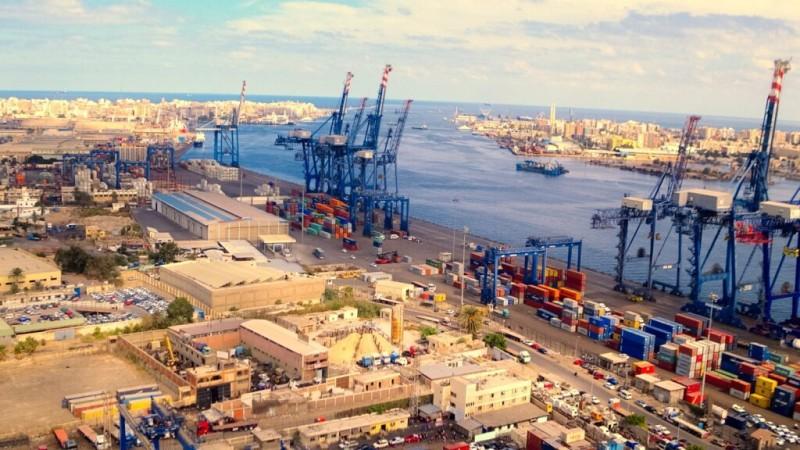
Busy hours at Port Said Port - © Suez Canal Economic Zone
Essential Travel Information
Getting Around Port Said
- Public Buses: Public buses in Port Said offer an affordable way to get around the city. They cover various routes and are a convenient option for traveling to different parts of the city.
- Taxis: Taxis are widely accessible and offer a versatile and pleasant mode of transportation. It's common practice to negotiate the fare before starting the journey or use a metered taxi to avoid misunderstandings.
- Car Rentals: For greater flexibility, consider car rentals. Various rental agencies in Port Said offer vehicles for short-term use, allowing you to explore the city and its surroundings at your own pace.
- Bicycles: Renting a bicycle is another enjoyable way to explore Port Said, especially in areas with pleasant weather. Cycling provides a leisurely way to see the city’s sights while enjoying the outdoors.
ATM & Banking Services
In Port Said, accessing banking services is convenient with numerous ATMs scattered throughout the city, allowing for easy cash withdrawals in local currency. Currency exchange can be handled at various locations, including banks, exchange bureaus, and some major hotels, ensuring you can convert your money as needed. It’s advisable to exchange some currency before arrival for immediate needs, although services are readily accessible once you’re in the city.
Where to Stay in Port Said
- Luxury Hotels: Port Said offers a range of luxury hotels that provide premium amenities and services. These high-end establishments feature spacious rooms, fine dining options, and additional comforts such as swimming pools and spa facilities. They are ideal for travelers seeking an upscale experience with top-notch service.
- Mid-Range Hotels: For a balance of comfort and cost, mid-range hotels in Port Said offer well-appointed rooms and essential amenities at reasonable prices. These accommodations cater to both business and leisure travelers, providing a comfortable stay without breaking the bank.
- Budget Lodgings: Travelers on a budget can find budget accommodations including hostels, guesthouses, and basic hotels. These options provide essential services and a comfortable place to stay, making them suitable for those who prioritize affordability while exploring the city.
Des articles pour vous

Voyage à Kampong Cham - Cambodge, Asie
Kampong Cham est une charmante ville riveraine située le long du fleuve Mékong. Connue pour son importance historique et ses attractions culturelles, Kampong Cham offre un mélange d'architecture coloniale, de temples anciens et de paysages pittoresques. Kampong Cham est reliée au district voisin de Tbong Khmum par le pont Kizuna, le premier pont au Cambodge à traverser le fleuve Mékong, en faisant un carrefour de transport crucial pour la région.
Population : Estimation de 80 000 habitants (en 2024)
Économie : Bien que n'étant pas encore une destination touristique majeure, Kampong Cham propose des sites culturels et historiques, tels que le temple Wat Nokor et le pont en bambou de Koh Pen, ainsi que des attractions naturelles comme des forêts et des chutes d'eau. Le gouvernement se concentre sur le développement du tourisme pour améliorer l'économie locale.
Points d'intérêt : Wat Nokor Bachey, Phnom Han Chey, Phnom Pros et Phnom Srey, pont en bambou de Koh Pen, Wat Joy T'maw, Preah Theat Teuk Chha, piste d'atterrissage abandonnée de l'US.

Explorez Nha Trang - Voyage au centre du Vietnam, Asie
Nichée le long de la magnifique côte du Vietnam, Nha Trang se distingue comme une destination de premier choix pour les voyageurs. Cette ville côtière, réputée pour ses superbes plages et sa vie marine foisonnante, s'adresse à tous. Nha Trang vous accueille à bras ouverts, que vous recherchiez des aventures, de la culture ou de la détente au bord de la mer. Ce guide vous fera découvrir les points forts de cet endroit magnifique, facilitant ainsi la planification de votre voyage de manière fluide et excitante.
Population : Environ 423 000 habitants en 2019.
Économie : L'un des principaux centres touristiques du Vietnam et la plus grande économie de la province de Khanh Hoa.
Sites emblématiques : Célèbre pour les tours Cham de Po Nagar, la cathédrale de Nha Trang et l'île Hon Mun.

Voyage à Sihanoukville - Cambodge, Asie
Sihanoukville, une ville côtière du sud-ouest du Cambodge, est la capitale de la province de Preah Sihanouk. Située sur une péninsule le long du golfe de Thaïlande, la ville est bien reliée à Phnom Penh par des autoroutes principales et dispose d'un aéroport international.
La ville abrite le seul port en eau profonde du Cambodge, jouant un rôle crucial dans la logistique et le commerce du pays. Les plages magnifiques de Sihanoukville, telles qu'Ochheuteal et Serendipity, attirent aussi bien les touristes nationaux qu'internationaux. Le développement économique a prospéré ces dernières années, en particulier grâce à la création de la Zone économique spéciale de Sihanoukville (SSEZ) et aux investissements chinois dans les casinos, l'immobilier et les stations balnéaires. La ville offre également des attractions naturelles telles que le parc national de Ream et plusieurs îles voisines, en faisant une destination variée pour les voyageurs d'affaires et de loisirs.
Population : La population de Sihanoukville était d'environ 160 000 habitants en 2024.
Économie : Sihanoukville, une ville côtière en pleine croissance au Cambodge, se distingue par son mélange dynamique de développement économique et de tourisme. La Zone économique spéciale de Sihanoukville (SSEZ) est devenue un pôle industriel majeur, abritant plus de 180 entreprises et créant des milliers d'emplois. Avec le seul port en eau profonde du Cambodge, la ville joue un rôle clé dans le commerce et la logistique du pays. Bien qu'elle se soit transformée d'une petite ville balnéaire tranquille en un centre urbain animé, Sihanoukville reste célèbre pour ses plages immaculées, attirant des touristes tout au long de l'année. Les investissements chinois importants ont alimenté la croissance des hôtels, des casinos et de l'immobilier, faisant de la ville un centre d'opportunités économiques et d'hospitalité.
Monuments : Plage d'Otres, Plage d'Ochheuteal, Plage de l'Indépendance, Parc national de Ream, Chute d'eau de Kbal Chhay, Monument des Lions d'Or, Wat Leu.

Explorez Kharkhorin - Voyage en Mongolie, Asie
Bienvenue à Kharkhorin, un trésor historique niché au cœur de la Mongolie. Ancienne capitale vibrante de l'Empire Mongol sous le légendaire Gengis Khan, Kharkhorin se dresse comme un témoignage de la riche culture et de l'histoire de la Mongolie. Cette ville antique possède une combinaison unique d'importance historique et de paysages époustouflants, en faisant une destination incontournable pour un voyage de rêve en Mongolie. En mettant le pied à Kharkhorin, vous ferez un saut dans le temps, à une époque de grands palais, de routes commerciales prospères et d'échanges culturels sans pareils. Que vous soyez intrigué par les ruines anciennes, désireux d'explorer les traditions locales ou simplement en quête d'une immersion dans la beauté naturelle de la Mongolie, Kharkhorin a quelque chose à offrir à chacun.
Population : Environ 1 000 habitants en 2020.
Économie : L'une des attractions touristiques les plus importantes de la Mongolie et l'ancienne capitale de l'Empire Mongol.
Monuments : Célèbre pour les Ruines de Kharkhorin, le Monastère d'Erdene Zuu, et la Vallée d'Orkhon, un site du patrimoine mondial de l'UNESCO.

Explore Luang Prabang - Laos Travel, Asia
Luang Prabang, nestled in northern Laos at the meeting point of the Mekong river and Nam Khan river, is a city celebrated for its rich cultural heritage and stunning natural beauty. Recognized as a UNESCO World Heritage Site in 1995, it boasts a unique blend of traditional Lao and French architecture that has been carefully preserved. Whether you're wandering through its ancient temples, admiring the local architecture, or soaking in the natural beauty of waterfalls and rivers, Luang Prabang offers something for everyone.
Population: Approximately 470,000 in 2020.
Economy: Luang Prabang's economy thrives on tourism, with its UNESCO status drawing visitors to its temples, natural wonders, and cultural experiences. Local crafts, hospitality, and small businesses also play vital roles, supporting the town's sustainable growth. Local crafts, hospitality, and small businesses also play vital roles, supporting the town's sustainable growth.
Landmarks: Famous for the Wat Xieng Thong, Royal Palace Museum (also known as Haw Kham), and Mount Phousi (Phou Si Hill).Luang Prabang, nestled in northern Laos at the meeting point of the Mekong river and Nam Khan river, is a city celebrated for its rich cultural heritage and stunning natural beauty. Recognized as a UNESCO World Heritage Site in 1995, it boasts a unique blend of traditional Lao and French architecture that has been carefully preserved. Whether you're wandering through its ancient temples, admiring the local architecture, or soaking in the natural beauty of waterfalls and rivers, Luang Prabang offers something for everyone.
Population: Approximately 470,000 in 2020.
Economy: Luang Prabang's economy thrives on tourism, with its UNESCO status drawing visitors to its temples, natural wonders, and cultural experiences. Local crafts, hospitality, and small businesses also play vital roles, supporting the town's sustainable growth. Local crafts, hospitality, and small businesses also play vital roles, supporting the town's sustainable growth.
Landmarks: Famous for the Wat Xieng Thong, Royal Palace Museum (also known as Haw Kham), and Mount Phousi (Phou Si Hill).

Explore Vientiane - Laos Travel, Asia
Vientiane, the capital of Laos, offers a unique travel experience for those looking to explore a peaceful Southeast Asian city with a deep connection to its cultural roots. Unlike other bustling capitals, Vientiane boasts a serene and laid-back atmosphere, making it a perfect destination for travelers wanting to escape the chaos of more crowded cities. This charming city sits along the Mekong River, offering scenic views, rich history, and a vibrant yet tranquil way of life. As a gateway to exploring Laos, this capital invites you to slow down, immerse in its heritage, and enjoy the local flavors.
Population: Approximately 840,000 in 2023.
Economy: Vientiane's economy is growing steadily, driven by government services, trade, and tourism. Key sectors include agriculture, manufacturing, and construction. The city's strategic location along the Mekong River supports trade with neighboring Thailand and Vietnam.
Landmarks: Famous for the Pha That Luang, Patuxai, and the Buddha Park (or Wat Xieng Khuan).
